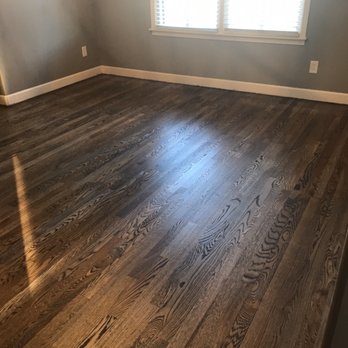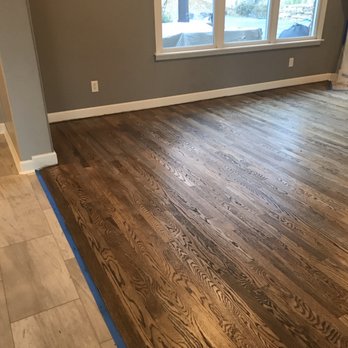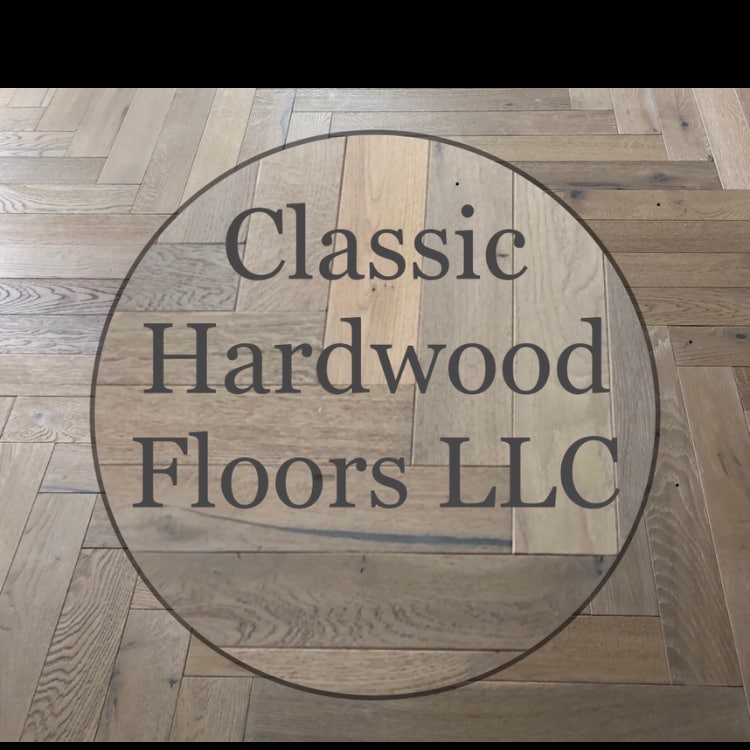When it comes to choosing the right flooring for your home, there are so many options out there. It can be overwhelming to figure out what will work best for each room. So, let’s break it down and talk about some of the most popular choices for different areas of your home. In this article, we’ll dive into the world of classic hardwood flooring and explore its benefits, as well as other alternatives for each room. By the end, you’ll have a better understanding of what will work best for your home.
Let’s start with the kitchen – a space that sees a lot of action and spills. Hardwood floors are a classic choice that adds warmth and style to any kitchen. However, if you’re concerned about moisture, engineered wood or porcelain tiles might be better options. In the living room, durability and style are key. Hardwood floors are a beautiful choice that can withstand heavy use. But if you’re on a budget, don’t worry – laminate flooring can give you the look of hardwood without breaking the bank. And in the basement, where moisture can be a problem, vinyl or ceramic tiles are great choices to handle those conditions. We’ll dive deeper into each room in the full article, so keep reading to learn more! When it comes to flooring options, classic hardwood is a timeless choice that can enhance the overall look and feel of your home. In this in-depth review, we will explore the various types of hardwood flooring and discuss their suitability for different rooms in your house.
Kitchen Flooring
The kitchen is often considered the heart of the home, and it is essential to choose flooring that can withstand high foot traffic, spills, and changing temperatures. Hardwood floors provide a warm and inviting aesthetic that complements a range of kitchen styles, from rustic to modern. Not only do they add a touch of elegance to the space, but they are also durable and can last for generations with proper care and maintenance.
If you’re concerned about the potential moisture in the kitchen, engineered wood can be an excellent alternative to solid hardwood. Engineered wood is constructed with a top layer of real wood and multiple layers of plywood or high-density fiberboard beneath. This design provides increased resistance to moisture, making it less prone to warping or cupping. It offers the same beautiful look as hardwood while being more suitable for areas where moisture is a concern.
Another option for kitchen flooring is porcelain or ceramic tiles. These materials are known for their durability and ease of maintenance. They are resistant to stains, scratches, and heat, making them ideal for a busy kitchen. Furthermore, tiles come in a wide range of styles and patterns, allowing you to choose the perfect design to match your kitchen decor. Consider opting for larger format tiles to reduce the number of grout lines and create a more seamless appearance.
Luxury vinyl flooring has also become a popular choice for kitchens due to its affordability, durability, and water resistance. With advancements in technology, vinyl flooring can closely mimic the look and feel of natural materials, including hardwood and stone. It is easy to clean, comfortable to walk on, and can withstand the demands of a busy kitchen.
Living Room Flooring
In the living room, comfort, style, and durability are often the key considerations when choosing flooring. Hardwood floors shine in this space, providing a classic and sophisticated look that is sure to impress. The natural beauty and warmth of hardwood create a welcoming atmosphere for you and your guests. With proper care, hardwood floors can last for decades, making them a worthwhile investment.
If you’re looking for a more budget-friendly option that still offers the appearance of hardwood, laminate flooring is worth considering. Laminate is a synthetic product that resembles hardwood through a high-resolution photograph placed on top of a fiberboard core. It is a cost-effective alternative that can imitate the texture and grain patterns of real wood.
For a cozy and inviting feel, plush carpet can be an excellent choice for the living room. Carpet provides a soft surface for children to play on, reduces noise, and adds warmth to the space. However, it’s important to note that carpet may require more maintenance compared to hard-surface flooring to keep it looking fresh and clean.

Basement Flooring
The basement poses unique challenges due to potential moisture issues and cold temperatures. When choosing flooring for this space, it is important to select materials that can handle these conditions.
Vinyl flooring is an excellent choice for basements. It is water-resistant, affordable, and available in a variety of designs, including those that mimic the look of hardwood or stone. Vinyl flooring can withstand potential moisture and humidity, making it a practical option for basement areas.
Ceramic tiles are another suitable option for basement flooring, particularly those rated for frost resistance. Tiles are resistant to moisture, durable, and easy to clean. They provide a sleek and modern look that can transform your basement into a functional and attractive living space.
If you desire the look of hardwood in your basement, consider engineered wood flooring with a moisture barrier. The added moisture barrier helps to protect the wood from potential moisture damage, making it more suitable for below-grade installations. This type of flooring offers the warmth and beauty of hardwood while being engineered to handle basement conditions.
Balcony Flooring
The balcony is an outdoor space that requires flooring options capable of withstanding exposure to the elements. The right flooring can transform your balcony into a comfortable and inviting outdoor retreat.
Outdoor tiles, such as porcelain, slate, or granite, are excellent choices for balcony flooring. These materials are highly durable and resistant to weathering, making them perfect for outdoor use. Outdoor tiles come in a wide range of styles, patterns, and colors, allowing you to create a unique and personalized balcony design.
Wooden decking is another popular option for balcony flooring. It adds a natural and warm aesthetic while providing a comfortable surface to walk on. However, it’s essential to select hardwood species that are resilient and can withstand outdoor conditions. Regular maintenance, including sealing and staining, is necessary to prolong the life of the wood and protect it from weather damage.
If your balcony is covered, outdoor rugs can add an extra layer of comfort and style. Outdoor rugs are designed to withstand outdoor conditions and come in various patterns and sizes to suit your taste and needs. They can create a cozy and inviting atmosphere, making your balcony an extension of your indoor living space.

Bedroom Flooring
Comfort is a top priority when it comes to bedroom flooring. You want a surface that feels soft and luxurious underfoot while enhancing the overall ambiance of the room.
Carpeting is a popular choice for bedrooms due to its plush and cozy feel. It provides warmth, reduces noise, and adds a touch of luxury. Walking on soft carpet first thing in the morning can be a comforting experience. However, it’s important to consider the maintenance requirements of carpeting, including regular vacuuming and professional cleaning to keep it looking fresh and hygienic.
If allergies are a concern for you or your household members, hard-surface flooring like hardwood or laminate can be a better choice. These options are easier to clean and do not trap dust or allergens as carpet does. Adding area rugs to your hardwood or laminate floors can provide the warmth and softness you desire while allowing for easy cleaning and maintenance.
Bathroom Flooring
The bathroom is a high-moisture environment that requires flooring options capable of withstanding water exposure. In addition to moisture resistance, durability and style are also important considerations for bathroom flooring.
Ceramic and porcelain tiles are ideal for bathroom floors. They are non-porous, making them highly resistant to water and stains. Tiles come in a wide range of colors, sizes, and textures, allowing you to create a personalized and visually appealing bathroom design. It’s important to choose slip-resistant tiles for bathroom floors to minimize the risk of accidents.
Natural stone tiles, such as slate or marble, can also work well in bathrooms. These materials provide a luxurious and elegant look that adds a touch of sophistication to the space. However, it’s important to note that natural stone requires regular sealing and maintenance to prevent water damage and staining.
Luxury vinyl tiles are a suitable option for bathrooms due to their water resistance and ease of maintenance. These tiles can mimic the look of natural materials, including stone and wood, at a more affordable price. They are comfortable to walk on, durable, and can handle the high-moisture environment of the bathroom.
For those looking for a more eco-friendly option, cork flooring can be a great choice for the bathroom. Cork is naturally water-resistant, antimicrobial, and provides a soft and comfortable surface underfoot. It’s important to choose cork flooring specifically designed for wet areas to ensure its durability and water resistance.

Conclusion
Selecting the right flooring for each room in your home is essential to create a cohesive and functional living space. Classic hardwood flooring is a versatile option that can enhance the beauty of any room. Whether it’s the timeless elegance of hardwood, the affordability of laminate, the comfort of carpet, or the durability of vinyl, there is a flooring option to suit every room in your house. Consider your specific needs, preferences, and the unique requirements of each space when making your choice. With proper installation and maintenance, your chosen flooring will provide years of beauty and functionality to enjoy.